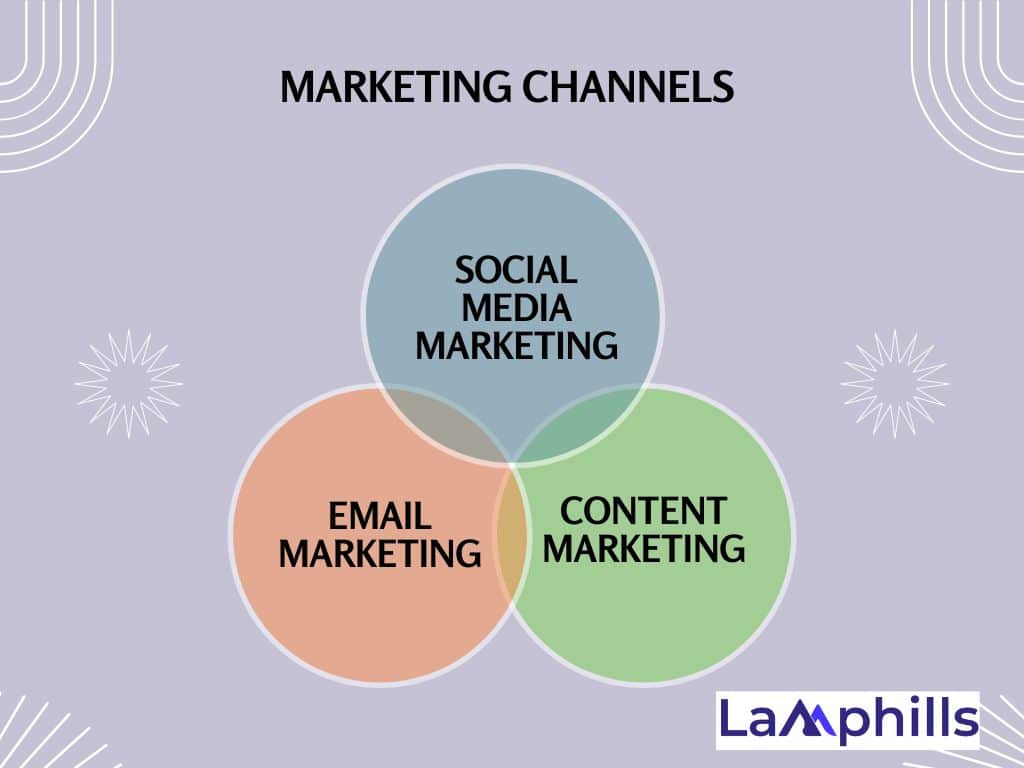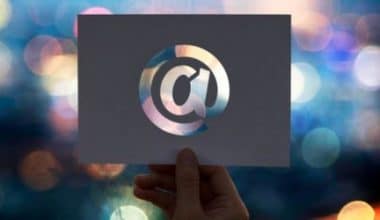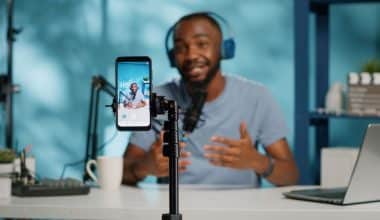Over time, I’ve learned that even the best-planned event can fail without a good marketing plan. I once helped organize a big corporate event with great speakers, a beautiful venue, and a robust agenda. But as the event approached, we realized ticket sales were low. The problem wasn’t a lack of interest; people didn’t hear about the event early enough.
This experience showed me that no matter how amazing an event is, it won’t succeed if no one knows about it.
Success in event planning isn’t just about having a great location or excellent speakers – it’s about spreading the word and attracting people. An event marketing plan helps bring everything together to create a successful experience.
In this guide, we’ll explain how to create a simple and effective event marketing plan that increases attendance and keeps people interested while ensuring your message is clear.
Whether you’re planning a conference, trade show, or expo, this guide can serve as a step-by-step checklist to help you succeed.
Keep reading.
Key Points
- Success in an Event marketing plan starts with knowing exactly what you want to achieve.
- Instead of spending big on fancy brochures, focus on things like online ads and influencers that get more attention and better results.
- Plan your marketing tasks early and give yourself enough time. This will allow you to avoid rushing and ensure that everything runs smoothly.
- Know who you’re trying to attract. By tailoring your message and using the platforms they prefer, you can connect with the right people.
- Let your event speakers and sponsors help spread the word. This will increase your event’s visibility and help draw more attendees.
What is an Event Marketing Plan?
Before getting into the details, let’s first understand the basics. An event marketing plan is a guide that explains how you will promote your event to attract people, sponsors, and media.
Like any plan, your strategy should include different methods and platforms to create excitement, get people to sign up, and make sure the event is a success.
From the beginning, the plan should have SMART goals—these are goals that are Specific, Measurable, Achievable, Relevant, and Time-bound. As your plan develops, it’s important to update it based on feedback from your team, outside sources, and anyone involved in the event.
The 5 P’s of Event Marketing
Before starting an event marketing campaign, it’s important to set the foundation. To do this, think about the five P’s of event marketing:
1. Product: What makes this event special? Why is it different from others?
2. Price: What is the event worth? How will it benefit attendees and sponsors?
3. Place: Where will the event happen? Will it be in-person, online, or a mix of both?
4. Promotion: What message do you want to send to your audience? What do you want the event to say about your brand?
5. People: Who is your target audience? Who do you want to attract and engage?
Answering these questions will help you build your event marketing plan and guide your promotional choices moving forward.
Essential Elements of an Event Marketing Plan- What Goes into an Event Marketing Plan.
Now that we know the purpose of an event marketing plan, let’s look at some of the main parts that go into it:
#1. Define Your Event Goals and Objectives
Every successful marketing plan starts with clear goals. When I first began planning events, I only focused on getting as many people as possible to attend. But as I gained more experience, I learned that different events have different goals.
For example, when planning a product launch for a client, it wasn’t just about filling the room—it was about making sure key influencers and potential business partners were present.
Setting clear and measurable goals is the key to a successful event marketing plan. Your goals should be organized and easy to track, so you can see how well things are going and make improvements if needed.
Take time to decide what success means for your event. Are you trying to build brand awareness, increase sales, or raise money for a cause? Setting your objectives gives your marketing a clear direction, from the audience you want to reach to the platforms you’ll use.
This helps ensure everyone is working together toward the same goal and moving at a pace everyone agrees with.
Here’s a SMART Goals Template to help you set clear and realistic goals for your event or project. SMART stands for Specific, Measurable, Achievable, Relevant, and Time-bound. Using this template, you can break down your goals step by step, making it easier to track progress and stay on target.
Whether you’re planning a small event or a big one, this template will keep your goals focused and achievable!
#2. Have a Clear Event Marketing Budget
Remember your budget. A few years ago, I realized how important it is to spend money wisely. At first, we spent a lot on fancy brochures and banners, but when we switched to using that money for Facebook ads and working with influencers, the response was much better.
A clear budget is a key part of any successful event marketing plan. When planning how to spend your money, you can aim high but stay realistic, making sure every dollar is used to get the best results from your marketing.
Start by listing all possible costs, such as online ads, printed materials, social media promotions, and other methods you plan to use. This detailed list helps you track spending and spot areas where you can save money.
You also need to think about which marketing channels you’ll use. Different channels cost different amounts and have varying levels of success. For example, digital marketing might be cheaper but needs expertise in targeting the right audience, while traditional media can reach more people but might be more expensive.
#3. Set a Clear Event Marketing Timeline
Time is significant when marketing an event, unlike promoting a product or service. Create a clear timeline that lists all the marketing tasks leading up to the event, starting from early teasers to follow-ups after the event.
One lesson I’ve learned is that the best event marketing plans are planned ahead, not rushed. Early in my career, I underestimated how long it would take to finish our ad design for an event. We had to hurry in the last week, and the results didn’t meet our expectations.
This is why creating a clear timeline is so important. Divide your marketing into phases: before the event (creating excitement, selling tickets), during the event (live updates, engaging attendees), and after the event (getting feedback, following up). Make sure each phase has specific tasks and deadlines.
A well-organized timeline helps keep marketing efforts on track and in line with key goals. Deadlines should be strict and well-planned to ensure everything is completed on time so the event is fully prepared.
Everyone involved, team members, management, and partners, should clearly understand their role and what they are working toward for the event.
#4. Identify Your Event’s Target Audience
At one of my more successful events—a fashion trade show—we succeeded by really understanding our audience. We knew we were aiming for young, trendy professionals, so we tailored our message, event design, and marketing just for them. We even worked with influencers who connected well with this group.
Knowing who your audience is helps you create the right marketing messages and choose the best ways to reach them.
Take time to figure out who your ideal attendee is. Consider their age, gender, job, interests, and where they spend time online. Are they on Instagram, Twitter, LinkedIn, or TikTok? What makes them want to attend events? The better you understand your audience, the easier it will be to market to them.
Start with what you already know and focus on the main theme of your event. Your target audience is likely already interested in the event, so it’s just about finding the right way to encourage them to attend.
#5. Create Your Event Branding
Your event brand shapes the entire experience for your attendees. Build a strong and appealing brand identity that highlights what makes your event special and connects with your target audience.
Using the same logos, colors, and designs across all your marketing materials helps people recognize and trust your brand.
A brand is more than just a name, logo, or color. It’s what makes you stand out from your competitors.
Even more, a brand is how your audience feels, thinks, and talks about you when you’re not around. Focus on creating a true identity that resonates with both your audience and your team.
#6. Create an Engaging Event Website
Every event, whether it’s online, in person, or both, needs a website. This website will be the main hub for all event information and registration.
Make sure the website is easy to use and includes important details like event info, speaker bios, agenda highlights, and sign-up forms.
Create an eye-catching landing page with simple instructions and a clear path for visitors to follow.
It’s also important to make the website work well on mobile devices since half of the world’s internet traffic comes from phones. A mobile-friendly website is not optional—it’s essential!
Below is an Event Website Guide that will help you create a user-friendly and attractive website for your event. A well-designed event website makes it easy for people to find information, register, and get excited about attending.
By following these simple tips, you can make sure your website looks great, works smoothly, and helps you reach more people!
#7. Promote Your Event Early and Often
An event doesn’t begin on the day it happens—it starts when the idea gains attention within your company. Don’t wait until the last minute to promote your event. Start marketing early, using multiple channels to create excitement and interest.
Keep people engaged with regular updates, countdowns, special offers, and deals. Ask others to help spread the word and share it on social media.
If you have an email list of people interested in the event, keep them informed about what they’ll miss out on if they don’t attend.
Instead of just repeating the event details and speakers, focus on solving problems for your audience and creating a sense of urgency or excitement (FOMO) to get them interested.
#8. Use Your Event Speakers and Attendees to Promote
Ask your speakers and attendees to help spread the word about your event. Give them promotional materials and offer incentives to encourage them to share their involvement with their friends and followers, which will boost your event’s visibility and trust.
Speakers are a great way to start promoting the event. For example, if you’re hosting a trade show and inviting popular brands, tag them in social media posts or ask them to mention the event to reach both of your audiences.
This partnership helps everyone involved by growing their networks and yours.
#9. Engage Your Event Sponsors
Event organizers always look for sponsors, and companies are happy to sponsor events that will give them more visibility and new customers. It’s a win-win situation. Sponsors get recognition and reach their audience, while you get help covering event costs.
This allows you to use your resources more effectively to create more engagement.
Sponsors want the event to succeed, but they are often not used to their full potential.
Ask your sponsors if they can offer branded items, share their expertise, or help promote the event through their social media, email lists, giveaways, or contests before the event.
Remember, when working out a deal with sponsors, it’s not just about money. They can also offer tools and support to help attract more interest from attendees or potential customers.
#10. Post-Event Survey & Follow-Up
Just because your event is over doesn’t mean your marketing is done. After the event, collect feedback from attendees through surveys to see what went well and where you can improve.
Stay in touch with attendees to build relationships and promote future events.
Surveys are useful because they show you how people feel about the event. For example, they might say the panel was great, but the location was hard to get to, and parking or transportation could have been better.
There might have been issues like not enough food options, poor lighting, or difficulties with registering on the website.
Remember, people are more likely to leave negative reviews than positive ones, so don’t be discouraged. Look for common feedback and use it to make your next event better.
#11. Choose the Right Marketing Channels for Your Event:
When promoting a small conference some time ago, I made the mistake of depending too much on just one platform, Facebook. It worked somewhat, but I missed out on people who were more active on LinkedIn or Twitter.
The lesson? Don’t rely on just one place. Use a variety of channels like different social media platforms, email marketing, and even traditional methods like posters or flyers if your event is local. For a recent corporate event, we used LinkedIn to target professionals, Instagram for more visual content, and email to reconnect with previous attendees. This mix helped us reach more people.

There are many ways to promote your event—social media, blogging, messaging industry influencers, or even putting up a big display in the middle of your city. Think about the strengths and limits of each option, both online and offline, and decide how to use your resources wisely.
Choose channels that make sense and where your target audience already spends time. For example, if you’re hosting a car show, you should be where car enthusiasts are, attending local shows and reaching them online.
If your event is about new electronics, focus on social media and digital marketing, and make sure you’re using enough resources to reach your audience.
Here are some of the best ways to get the word out:
Social Media Marketing
Social media is a great way to create excitement for your event without too much effort. Keep your posts simple and clear as long as the rest of your marketing plan is running smoothly.
For example, sharing links to your website and talking about a key part of your event is a good way to get people interested. Post regularly to keep the momentum going.
Interact with your audience on platforms like Twitter, LinkedIn, and Instagram. Share previews, behind-the-scenes content, and testimonials from others to boost their excitement and keep them engaged.
Content Marketing
Content is more important than ever these days. With so much AI-generated content, it can be hard to tell what’s original.
You can’t fake good content, especially if you’re seen as an expert in your field. Writing helpful articles on specific topics or common problems in your industry will always make a strong impact and help shape your brand.
Content can come in many forms, like blog posts, guides, videos, podcasts, and Q&As. Give your audience solutions to important issues, and they’ll keep returning for more.
Email Marketing
As of December 2023, 77% of marketers have noticed more engagement from email marketing over the past year.
Email is still one of the best ways to promote an event. Create personalized and engaging email campaigns to build interest, share event updates, and encourage people to sign up.
Be sure to follow up and have a clear plan. Email marketing should include 3–5 messages that provide useful information, calls to action, and reminders—this will help boost engagement.
So yes, people still open their emails!
Event SEO
Before you start marketing, your event needs its own webpage, landing page, or website. Depending on how big and important the event is and when it’s happening, you may need to launch the site months ahead of time. This gives search engines enough time to find and list your event.
Make sure the site is updated and easy to find, so there’s no confusion about whether the event is still happening. A well-designed site also allows people to buy tickets, packages, and other extras in one place.
To get more visitors, optimize your event website for search engines. Use relevant keywords, meta tags, and backlinks to make your event easier to find online.
Paid Digital Promotion
Organic marketing is great for long-term growth, but it might not be enough when you’re just starting or trying to get the word out.
Boost your organic efforts with paid ads on platforms like Google, Facebook, and LinkedIn. Focus on targeting specific groups and interests to get the best results and reach more potential attendees.
You can also create lookalike audiences, which are groups of people similar to those who have bought from you before, interacted with your ads, or taken actions that help your goals.
#12. Monitor and Improve Your Efforts
In the past, after an event ended, I would move on to the next project without looking back. However I soon realized that tracking how well your event marketing worked is just as important as making the plan. For example, after one event, we saw that our email marketing led to more sign-ups than our Facebook ads. So, for the next event, we focused more on email marketing and adjusted our Facebook approach.
How Will You Measure the Success of Your Event Marketing?

It’s important to track key performance indicators (KPIs) to see how well your event marketing plan is working. But not all numbers are helpful. Here are some key KPIs to keep an eye on:
- Registrations and Check-ins: Count how many people register and show up to measure event turnout and engagement.
- Revenue and Cost-to-Revenue Ratio: Compare the money earned from the event to the cost of marketing it to see if it was profitable.
- Attendee Satisfaction: Collect feedback from attendees through surveys to find out how happy they were and where you can improve. Encourage feedback with giveaways, discounts, or other rewards.
- Social Media Mentions/Engagement: Monitor your social media for mentions, likes, shares, and comments to gauge your audience’s engagement. Also, consider which posts worked well and which didn’t.
- Lead Acquisition and Customer Conversion: Track the leads generated by your event marketing and see how many turned into paying customers or sponsors.
Final Thoughts
In conclusion, every event is different, and so are the marketing strategies you’ll need. But with careful planning, creativity, and smart thinking, you can make your event more impactful and reach a wider audience. Success is possible by setting clear goals, knowing your audience, using the best marketing methods, and regularly reviewing and improving your plan.
It might seem overwhelming at first, but with each event you plan, you’ll gain more confidence and skill. My final advice is: don’t be afraid to make mistakes and adjust your strategy. Event marketing is as much about being flexible as it is about planning.
By following these steps, you’ll be on your way to creating a successful event marketing plan.
Answers to FAQs.
What does a marketing plan look like?
A good marketing plan should have an overview, a clear mission, marketing goals, a SWOT analysis (strengths, weaknesses, opportunities, and threats), market research, a marketing strategy, and a budget. Depending on the organization’s goals, some plans may include extra sections if needed.
How to create an event budget?
1. Know Your Event Goals: Be clear about what you want to achieve with your event.
2. List Specific Expenses: Write down all the costs you expect, like venue, catering, and supplies.
3. Get Multiple Vendor Quotes: Ask different vendors for prices to compare and find the best deal.
4. Balance Income and Expenses: Make sure the money coming in from ticket sales or sponsors covers your costs.
5. Set Aside Emergency Funds: Keep some money aside for unexpected expenses.
6. Use Event Management Software: Use tools to help you track and manage your budget easily.
What is positioning in event marketing?
Positioning is the strategy of figuring out, through gut feeling, research, and analysis, the specific needs of your audience that your event satisfies.
What is event marketing also known as?
Event marketing, also called experiential marketing, is about creating experiences, either online or in person, to help potential and current customers learn about your products, services, or business.
What is an event marketing tool?
Event marketing is how businesses use events to promote their brand, product, or service by directly engaging with people. These events can be online or in-person, and companies can participate by hosting, co-hosting, joining, or sponsoring the event.
Similar Articles
15 Best Marketing Campaigns of All Time: What to Learn From Them
How to Create an Effective Media Plan: Examples and Template
15+ MARKETING WEBSITES EVERY MARKETER SHOULD KNOW






